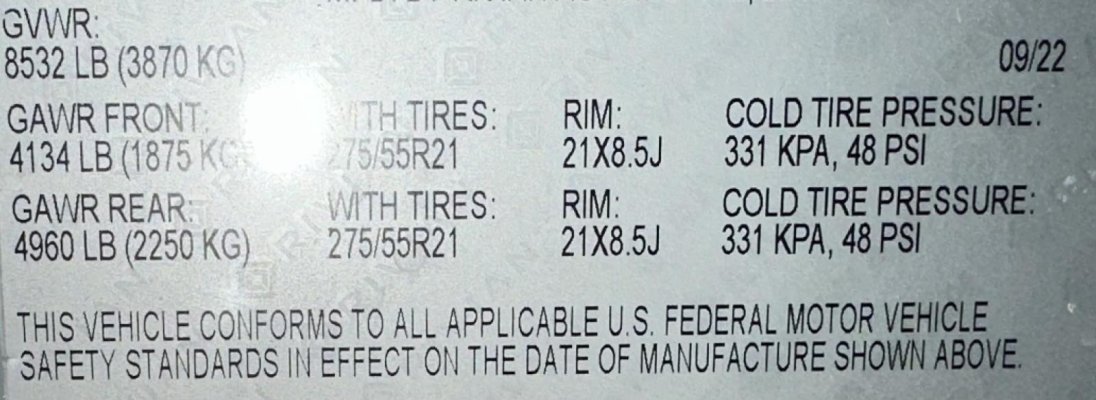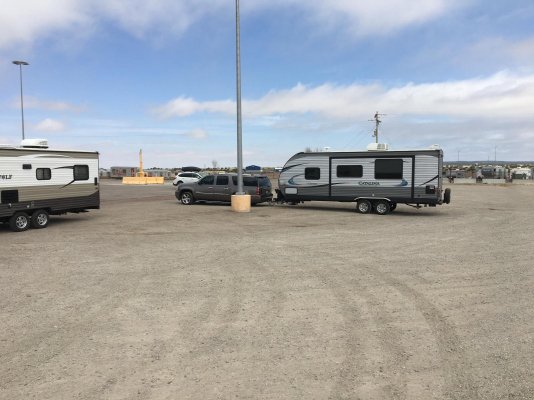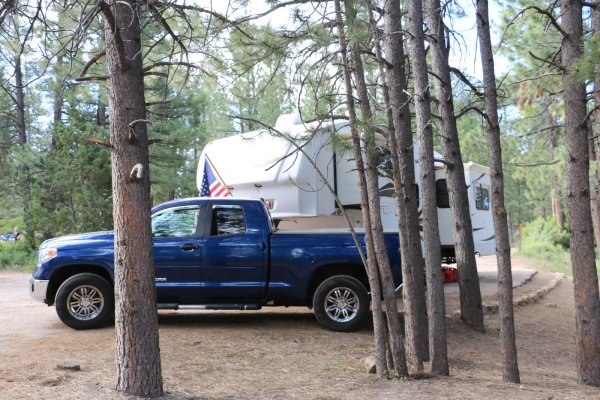My take on it, which may or may not be correct is this.
You can load your front axle up 4,134 pounds. Or you can load your rear axle up to 4,960 pounds, BUT you can NOT exceed 8,532 pounds combined. So, whatever your front axle weighs in at while you are loaded, full fuel, all passengers, snacks, etc. then whatever weight is left to reach 8,532 is what you can load onto your rear axle. It gives you some flexabilty to how the vehicle is loaded, as long as you stay below the GVWR of 8,532.
When I was driving semi, I built a spreadsheet that would try to keep me under 80,000 lbs. Brokers loved to max out loads (more money for them, the same for me

Anyway, with the adjustable trailer axles (moving weight from trailer axles to fifth wheel and back) and adjustable fifth wheel to move weight between the steer and drive axles. With the fuel tanks mounted midway between steer and drive axles, I could make 79,990 pounds work. The pain was if I could only run with half full tanks and anymore fuel would over load the front axles, it meant more stops for fuel. (So, at an average of 7 pounds per gallon, 1 gallon could add 4 pounds to the steer and 3 pounds to the drives. 10 gallons would add 40 pounds to the steers and 30 to the drives. Consequently, 200 gallons would add 800 pounds up front and 600 pounds to the drives. And so-on and so-forth up to the 600 gallons I was capable of carrying.) That being said, I could roll across the scale and only weigh 78,000 pounds but without things balanced, I could easily be 5,000 - 10,000 over on the steers and still be under weight. The scale master would only see $$$$$$$ and that trip just became unprofitable really quickly, although if under gross they would usually let you try to "rebalance" the load and scale again. (Just a side note, I know a few truckers that would be pushing the limits and time each fuel stop after each scale. If they could roll across the scale "almost" empty of fuel, their chances of not getting stopped were much better.)
All of that to say, as Jack mentioned, your truck is more than capable to pull something heavier, but once you reach 4,960 ponds on your rear axle, you best not have more than 3,572 pounds on your front axle. (Which I wouldn't recommend either, as the front end will be light and tend to wonder.) Try to balance out the weight proportionately between front and back, and then all will be good with the world, and your ride. But, until you know what your truck weighs loaded, it is really hard to know what you can drop onto your hitch and go.
Do people run overloaded, all the time! Do they get away with it, most the time! Is it smart to roll the dice and throw caution to the wind? Only you can answer that. But it sounds like you are working on doing it the correct way, and I commend you for that.




